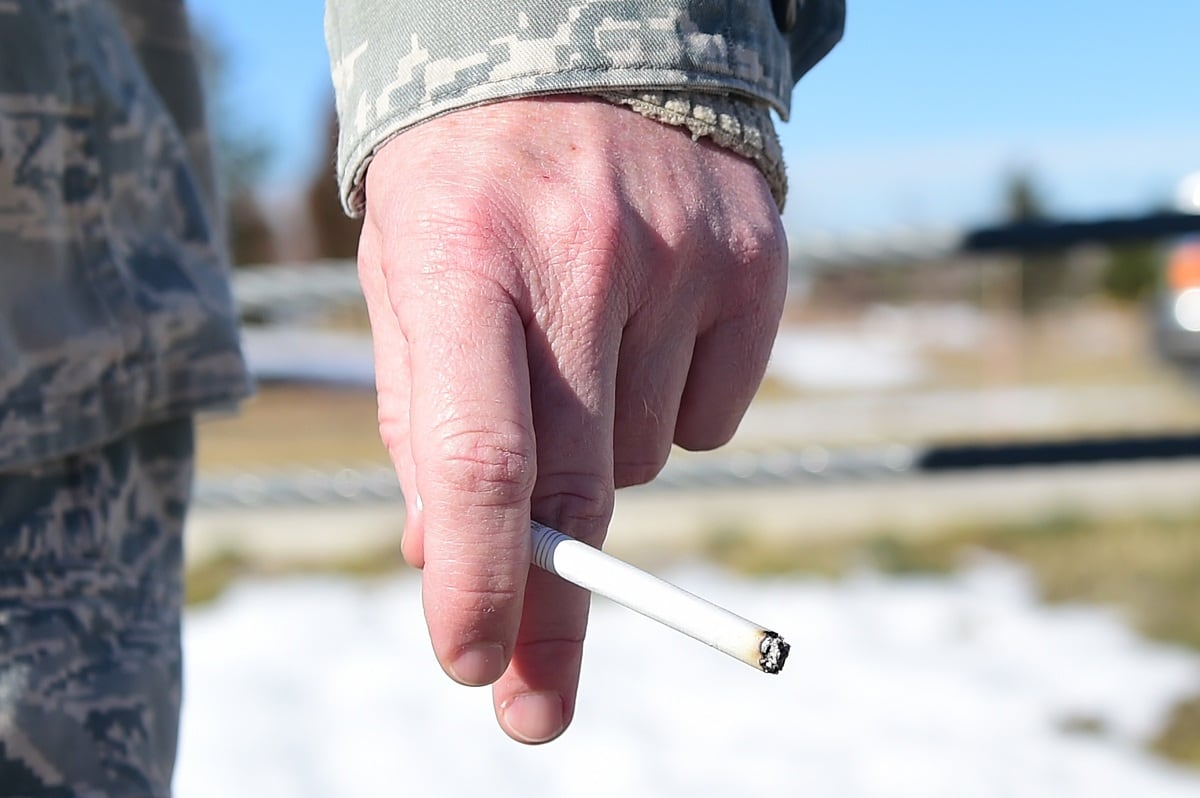Binge drinking and increased use of e-cigarettes among service members are two of the behavioral trends Defense Department officials need to address, according to researchers who analyzed the most recent DoD Health Related Behaviors Survey.
About one-third of the service personnel surveyed met the criteria indicating hazardous drinking and possible alcohol use disorder, with 30 percent reporting that they binge drank in the past month. Among Marines, that figure jumped to 42.6 percent.
Binge drinking is defined as more than five drinks for men or more than four for women in one sitting, according to the report, issued by Rand and based on a survey that was conducted from late 2015 to early 2016.
That rate was down from 33.1 percent in the previously reported survey from 2011, but it’s still high enough to cause concern, researchers said. Drinking problems could be addressed by shifting the culture and climate surrounding alcohol use, such as communicating disapproval of heavy drinking and changing on-base alcohol and sales policies, according to the report.
RELATED

This report is issued at the same time beer and wine will be more widely available on bases, with sales expanding to military commissaries. Until now, alcohol has been sold only at the exchanges. Defense officials have said that the sale of these products must comply with the department’s efforts to “deglamorize” alcohol.
The survey used a random sampling method and was sent to 201,990 service members in the Army, Air Force, Marine Corps, Navy and Coast Guard. Of those, 16,699 usable responses were received, for a response rate of 8.6 percent. The 2018 survey is expected to be fielded in the fall, and Rand has made recommendations for getting a higher response rate for a new, shorter survey, said Sarah O. Meadows, Rand co-principal investigator for this report.
DoD has changed policy in the past based on results of the Health Related Behaviors Survey, which has been fielded periodically for more than 30 years.
“One of the big success stories has been the emphasis on cigarette smoking," said Meadows. "The rates have gone down.”
Defense officials have taken a number of steps, such as increasing the prices of tobacco in military stores, limiting areas where smoking is allowed and launching an extensive education campaign about the dangers of smoking.
This year’s survey asked where service members purchased their cigarettes; more than half of those who bought cigarettes in the previous year bought them mainly on base.
RELATED

While cigarette smoking has been declining in the military, there are some trends to watch, according to the report. Researchers recommended DoD officials pay attention to the increasing use of e-cigarettes, as 12.4 percent of those surveyed reported using them in the previous month. That percentage was 4.6 in 2011.
“The health consequences of e-cigarette use are not yet established, but the dramatic increase in e-cigarette use, especially among younger service members, is worth attention now and continued tracking in the future,” researchers stated.
For the first time, cigarette smoking in the military has declined to the point that it’s now lower than rates in the general population, according to the report. Overall, 13.9 percent of those surveyed indicated they are current cigarette smokers, which is down from the 24 percent in the 2011 survey.
The rate of smoking in the general population was 16.8 percent in 2014, the latest available from the Centers for Disease Control and Prevention when Rand researchers did their analysis. The most recent CDC numbers from 2015–2016, comparable with the DoD survey time period, estimate the general population’s rate of smoking has decreased to 15.5 percent. Although the rate is probably still significantly different, it’s more neck-and-neck.

Among other recommendations from researchers:
- Continue to monitor the use, and efforts to increase the use, of long-acting methods of contraception. The report showed inconsistent use of contraception, with 17.7 percent of servicewomen reporting they didn’t use a form of birth control the most recent time they had vaginal sex.
- Mandate more frequent HIV testing for those at high risk of infection. Attention should focus on unmarried service members, of whom more than 40 percent were in the high-risk category for HIV infection.
- Address concerns related to lack of sleep. More than half of service members reported getting less sleep than they need, and 30 percent reported being bothered by sleep-related lack of energy. In addition, 8.6 percent took sleep medications daily or almost daily.
Karen has covered military families, quality of life and consumer issues for Military Times for more than 30 years, and is co-author of a chapter on media coverage of military families in the book "A Battle Plan for Supporting Military Families." She previously worked for newspapers in Guam, Norfolk, Jacksonville, Fla., and Athens, Ga.



